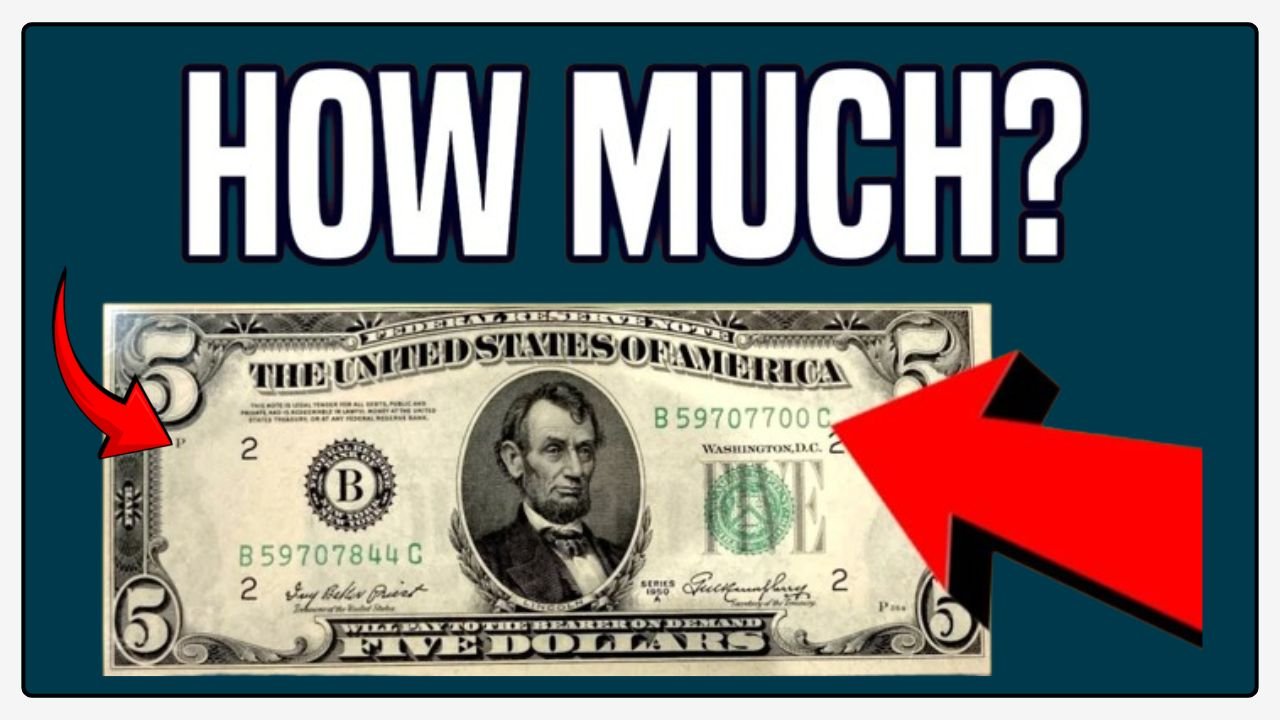Rare $5 Note: You might not think twice about the $5 bill in your wallet, but what if it’s worth way more than a coffee run? Some $5 bills with a special feature called a “radar serial number” are selling for jaw-dropping prices, with one specific pattern—31000—possibly fetching up to $4.5 million at auction! These rare bills are hiding in plain sight, maybe in your pocket right now. Here’s how to spot one and why collectors are going crazy over them.
What’s a Radar Serial Number?
A radar serial number is like a word that reads the same backward and forward, like “racecar.” On a $5 bill, it’s an 8-digit number that mirrors itself, such as 03100013 or 12344321. The magic happens when the number includes “31000” in a palindromic pattern, making it super rare. Only a tiny fraction of bills have this feature, which is why collectors pay big bucks for them. The symmetry, combined with the specific 31000 sequence, turns an ordinary bill into a numismatic gem.
Why Are These Bills So Valuable?
Collectors love radar notes because they’re scarce and visually appealing. A $5 bill with a radar serial number like 03100013 isn’t just money—it’s like owning a rare piece of art. The value skyrockets if the bill is in mint condition, from an older series (like 1995 or 2001), or is a “Star Note” (a replacement bill with a star symbol at the end of the serial number). According to recent reports, a pristine $5 bill with a 31000 radar pattern could be worth millions because of its rarity and collector demand. It’s not just cash; it’s a status symbol in the world of currency collecting.
How to Check Your $5 Bill
You don’t need to be a pro to find a valuable bill. Here’s how to check:
- Look at the serial number on the top right and bottom left of the bill’s front.
- See if it reads the same forward and backward, like 03100013.
- Check for the 31000 pattern in the number.
- Note the series year (under Lincoln’s portrait) and condition—crisp, uncreased bills are worth more.
- Look for a star symbol at the end of the serial number for extra value.
If you spot a radar number with 31000, don’t spend it! Get it checked by a currency expert.
| Feature | What to Look For | Why It Matters |
|---|---|---|
| Serial Number | Palindrome with 31000 (e.g., 03100013) | Rare and highly collectible |
| Series Year | Older years like 1995, 2001, 2006 | Increases value |
| Condition | Crisp, no folds or tears | Mint condition boosts value |
| Star Note | Star symbol at end of serial number | Rarer, printed in smaller batches |
Can You Find One in Circulation?
Believe it or not, these valuable bills can still pop up in everyday cash. People have found them in change at stores, inherited them, or discovered them in old wallets. Since $5 bills aren’t hoarded as much as $1 or $100 bills, a rare one might slip through unnoticed. The U.S. Bureau of Engraving and Printing doesn’t make these fancy serial numbers on purpose—they happen by chance, which makes them even more special. So, next time you get change, take a quick peek at the serial number.
What to Do If You Find One
If you think you’ve got a radar note, handle it carefully to keep it in good shape. Don’t fold or crumple it, as condition matters a lot. Store it in a protective sleeve and contact a professional appraiser or grading service like PMG or PCGS. You can sell it through auction houses like Heritage Auctions, on eBay, or to a currency dealer, but get it authenticated first. A $5 bill with a 31000 radar serial recently made headlines for its $4.5 million estimate, so you could be sitting on a goldmine.
A Hidden Fortune in Your Pocket
The next time you pull out a $5 bill, don’t just hand it over for a snack. Check the serial number for that rare 31000 radar pattern. It might seem like just pocket change, but it could be your ticket to a life-changing payday. In the world of currency collecting, the smallest details can lead to the biggest rewards. So, keep your eyes open—your next trip to the store might just make you a millionaire

